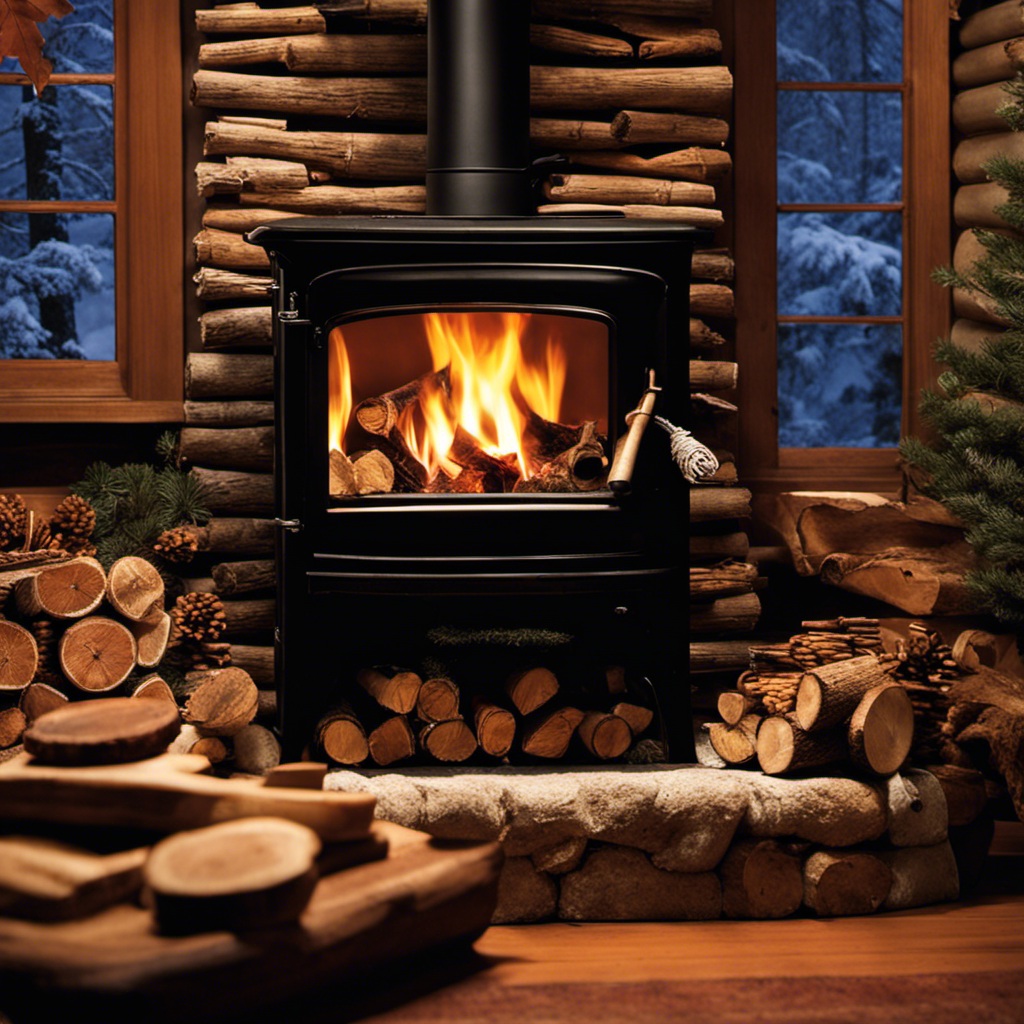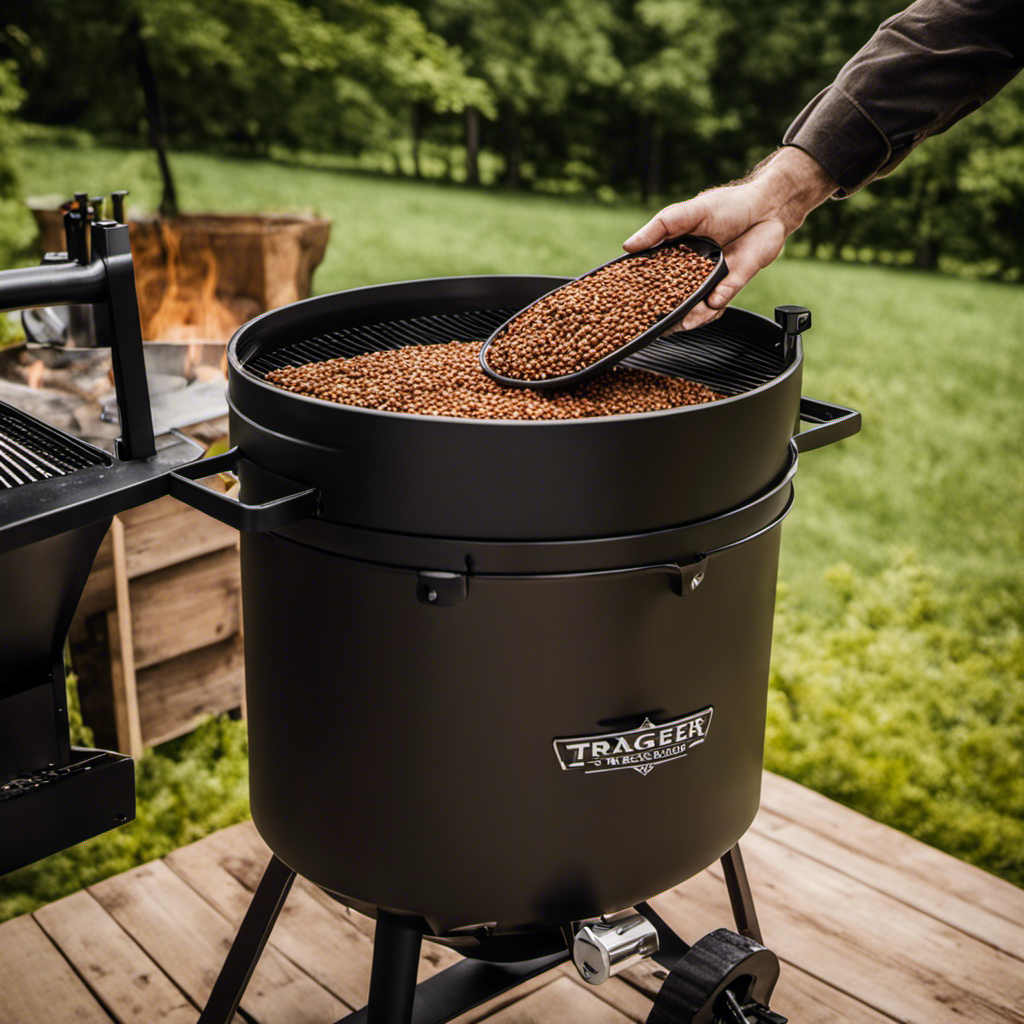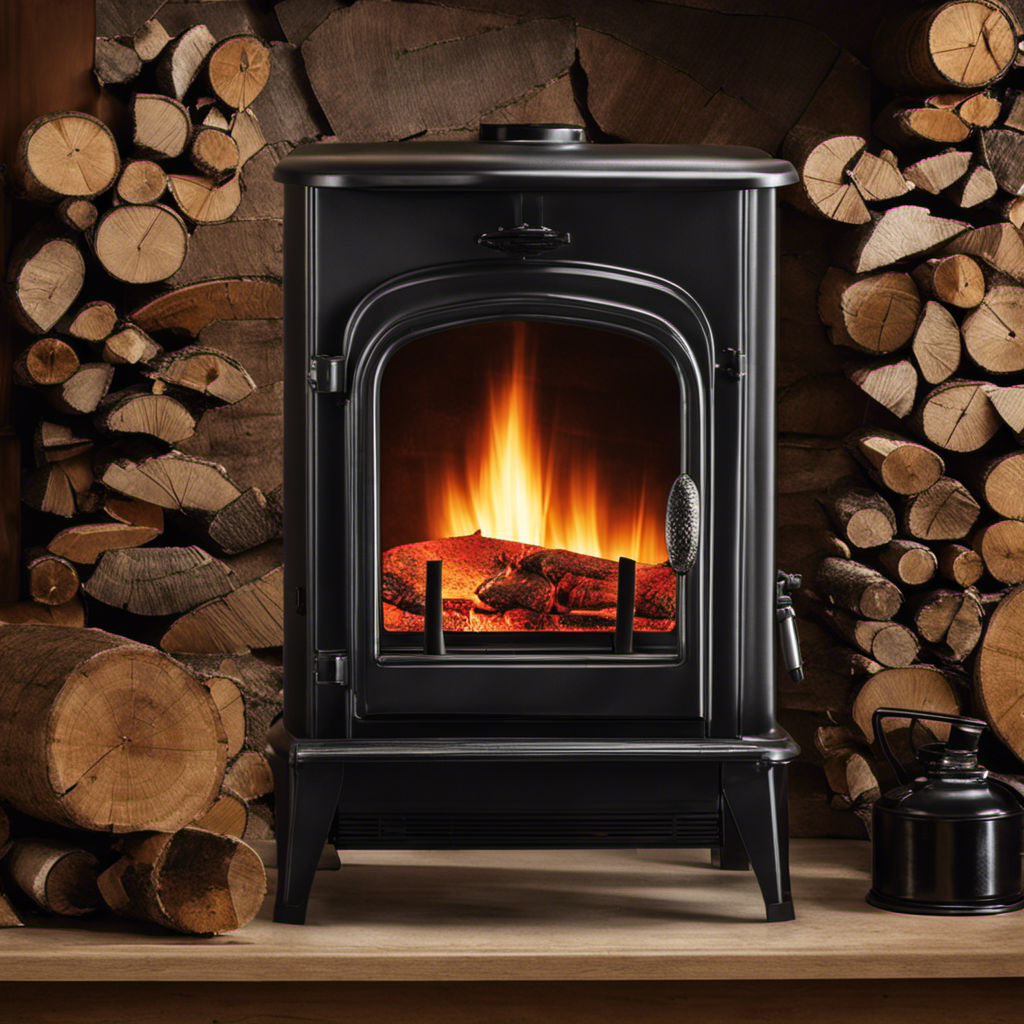I often catch myself pondering over which materials can be safely and effectively used as fuel in a wood stove.
Recently, my neighbor tried using old newspaper as kindling, but it ended up creating more smoke than heat.
In this article, I’ll share my findings on what can and cannot be burned in a wood stove.
From traditional firewood options to alternative fuels like pellets and wood bricks, we’ll explore the best choices for a warm and sustainable fire.
Key Takeaways
- Sustainably sourced firewood, preferably seasoned hardwoods like oak, maple, and hickory, are preferred for wood stoves.
- Softwoods like pine and fir ignite quickly and produce more heat, but they have higher sap content and can lead to more creosote buildup.
- Alternative fuels like pellets, corn, and wood bricks offer high efficiency, consistent heat output, and lower carbon footprints compared to traditional firewood.
- It is important to avoid burning materials like plastics, treated wood, and household waste as they release harmful toxins and pollutants into the air. Proper recycling or composting is recommended.
Firewood: Traditional and Sustainable Options
I prefer using sustainably sourced firewood for my wood stove. When it comes to splitting firewood, having the right tools and techniques is essential for efficient preparation.
A good axe or maul is necessary to split the logs into manageable pieces. I find that using a splitting wedge can also help when dealing with larger logs. It’s important to have a sturdy chopping block or log to prevent injury.
As for storing firewood, keeping it dry and ready to burn is crucial. I recommend stacking the firewood off the ground and covering it with a tarp or waterproof cover. This will protect it from moisture and ensure it stays dry.
With these tips in mind, let’s move on to the next section about seasoned hardwoods: the best choice for efficient burning.
Seasoned Hardwoods: The Best Choice for Efficient Burning
Seasoned hardwoods are my top choice for efficient burning in a wood stove. Hardwoods like oak, maple, and hickory have a higher density, which means they burn hotter and longer compared to softer woods like pine or spruce. This allows for a more efficient and sustained heat output, maximizing wood stove efficiency.
When choosing the right firewood for your wood stove, it’s important to consider the type of wood you’re using. Seasoned hardwoods are also ideal because they’ve been properly dried, reducing moisture content and ensuring a clean and consistent burn. They produce less smoke and creosote buildup, which can lead to chimney fires.
Softwoods: Pros and Cons for Wood Stove Use
When it comes to softwoods, it’s important to consider their pros and cons for efficient burning in a wood stove. Softwoods, such as pine and fir, can be great options for burning in a wood stove, but there are a few things to keep in mind.
-
Quick ignition: Softwoods tend to ignite more quickly than hardwoods, making them easier to start a fire with. This can be especially beneficial for wood stove safety, as it reduces the risk of smoke and gas buildup.
-
High heat output: Softwoods have a higher resin content, which means they produce more heat when burned. This can be advantageous in colder climates or when you need a quick burst of heat.
-
Environmental impact: However, softwoods also have a higher sap content, which can lead to more creosote buildup in your chimney. Creosote is highly flammable and can increase the risk of chimney fires. It’s important to regularly inspect and clean your chimney to prevent any safety issues. Additionally, softwoods are generally less dense than hardwoods, meaning they burn more quickly and require more frequent refueling.
Transition: While softwoods have their advantages, it’s worth exploring alternative fuels like pellets, corn, and wood bricks, which offer their own unique benefits.
Alternative Fuels: Exploring Pellets, Corn, and Wood Bricks
Exploring alternative fuels like pellets, corn, and wood bricks can offer unique benefits for heating purposes. When it comes to energy efficiency, it’s important to compare the heat output of different alternative fuels.
Pellets, for example, are highly efficient and produce a consistent heat output due to their uniform size and density. Corn, on the other hand, may not be as energy efficient as pellets, but it can still provide a decent amount of heat. Wood bricks, made from compressed sawdust and wood shavings, are also a popular alternative fuel choice due to their high energy efficiency.
Additionally, when assessing the environmental impact of these alternative fuels, it’s crucial to consider their carbon footprint. Pellets, corn, and wood bricks all have lower carbon footprints compared to traditional firewood, making them more environmentally friendly options.
In conclusion, exploring alternative fuels for your wood stove can’t only provide efficient heating but also contribute to a greener environment.
Moving on to the next section about what not to burn in your wood stove…
What Not to Burn: Materials to Avoid in Your Wood Stove
I’ve learned that using certain materials in my wood stove can be dangerous and should be avoided. It’s important to be mindful of what we burn, not only for our safety but also for the environment. Here are three materials that should never be burned in a wood stove:
-
Plastics: Burning plastics releases toxic fumes that can be harmful to both our health and the environment. It’s best to recycle or dispose of plastics properly.
-
Treated Wood: Wood that has been treated with chemicals, such as pressure-treated or painted wood, shouldn’t be burned. These chemicals can release harmful toxins into the air when burned.
-
Trash: Burning household waste, including paper products with ink or plastic coatings, can release harmful pollutants into the air. It’s better to recycle or compost these materials.
Frequently Asked Questions
Can I Burn Treated or Painted Wood in My Wood Stove?
Yes, I can burn treated wood in my wood stove, but it’s not recommended due to the harmful chemicals released. As for painted wood, it’s also not advisable as burning it can release toxic fumes.
Are There Any Specific Types of Softwoods That Are Better for Wood Stove Use?
The best softwoods for wood stoves are those that burn efficiently and produce a high amount of heat. Some examples include pine, spruce, and fir. These softwoods are readily available and make for excellent fuel sources in wood stoves.
How Do Alternative Fuels Like Pellets and Corn Compare to Traditional Firewood?
Comparing alternative fuels like pellets and corn to traditional firewood, they offer higher efficiency and lower environmental impact. However, availability and cost effectiveness vary. It’s important to consider these factors when choosing the best fuel for a wood stove.
Can I Use Wood Chips or Sawdust as Fuel in a Wood Stove?
Sure, you can burn wood chips or sawdust in a wood stove. It’s a sustainable and efficient way to heat your home. Just make sure to use dry and seasoned material for optimal performance.
What Are the Safety Precautions to Take When Burning Wood in a Wood Stove?
When burning wood in a wood stove, it’s important to take safety precautions. Make sure to have a fire extinguisher nearby, keep flammable items away, and properly dispose of ashes to prevent fires.
Conclusion
In the vast realm of wood stove fuel options, seasoned hardwoods emerge as the crowned victors. Their efficiency and sustainability make them the ideal choice for efficient burning.
Softwoods, although readily available, come with their own set of pros and cons.
For those seeking alternatives, exploring pellets, corn, and wood bricks can offer a viable solution.
However, it’s crucial to remember what not to burn in your wood stove to avoid potential hazards.
So, let the seasoned hardwoods reign supreme in your cozy kingdom of warmth and comfort.











